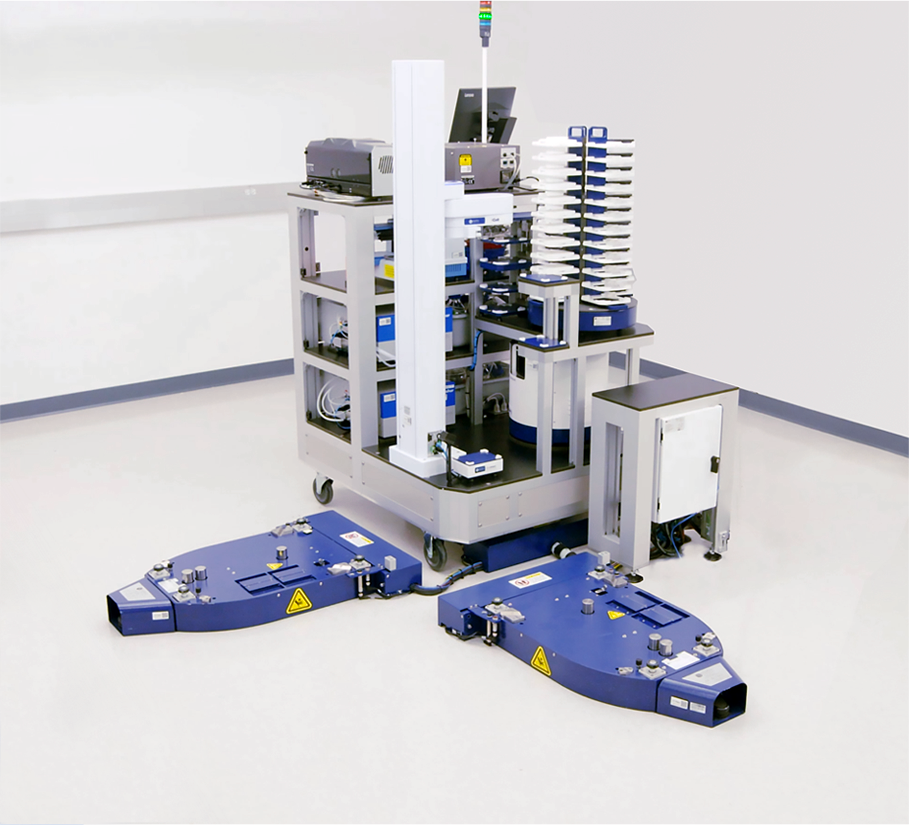The Biodesign Institute® at Arizona State University has reached an agreement with HighRes Biosolutions to automate DNA sample preparation of Nucleic Acid Programmable Protein Arrays (NAPPA) using a flexible dual NanoCell™ laboratory automation system. The dual NanoCell system was selected by Dr. Joshua LaBaer, director of the Institute’s Virginia G. Piper Center For Personalized Diagnostics, and will be installed at the NAPPA core facility within his Center at Tempe, Arizona. The system will enable the systematic and repeatable extraction of thousands of different constructs per week from the group’s extensive cDNA repository.
The NAPPA technology allows for the rapid production of protein microarrays for both research and diagnostic purposes. In the specific case of NAPPA-produced microarrays, DNA templates are immobilized to a glass slide then translated and captured in situ. Limitations of this technology have always been the requirement to tediously produce large quantities of high purity DNA from tens of thousands of bacterial clones. The Biodesign Institute has decided to reduce this burden by partnering with HighRes Biosolutions, a fast-growing laboratory robotics company in Woburn, MA.
Based on chemistries developed by LaBaer’s Center, HighRes designed a simple and robust automated solution to streamline the generation of high-purity DNA for the arrays. By applying a flexible and modular robotic platform to this typically manual and complicated process, the NAPPA core will be able to simultaneously reduce variability between preps and provide more arrays to researchers and clinicians around the globe.
“This new HighRes automated platform will create a unique resource,” said Dr. LaBaer. “It will increase our sample capacity by at least five-fold, ensure batch-to-batch consistency and produce more regular results on the arrays. The DNA produced is pure enough for mammalian cell culture, and the modularity of the system will allow us to extend this beyond the protein microarrays for use in high-throughput cell-based assays as well.”
“We couldn’t be more pleased to work with Dr. LaBaer’s lab to automate their sample prep process” said Angela Gray, Director of West Coast Sales and Service at HighRes Biosolutions. “Automating these laborious tasks will enable the NAPPA core to generate more reproducible protein arrays and help to further the technology and its applications.” Angela goes on to say, “we believe the flexible and modular design of this system, made possible through the patented MicroDock™, will transform the process of high throughput DNA extraction from bacteria.”
About the Biodesign Institute® at Arizona State University
The Biodesign Institute addresses today’s critical global challenges in healthcare, sustainability and security by developing solutions inspired from natural systems and translating those solutions into commercially viable products and clinical practices. www.biodesign.asu.edu
About HighRes Biosolutions
HighRes Biosolutions, Inc. (www.highresbio.com) is the leader in the design and construction of innovative robotic systems and laboratory devices used by pharmaceutical, biotech, and academic research laboratories. HighRes accelerates drug discovery, high-throughput genotyping, siRNA screening, next-generation sequencing sample prep, biorepository science and molecular diagnostics with highly flexible, expandable and modular integrated systems and bench-top devices that are easily configured (and reconfigured) for fast-paced, dynamic laboratories.
###


